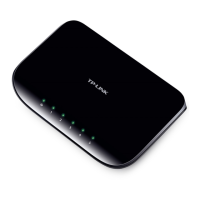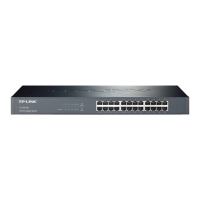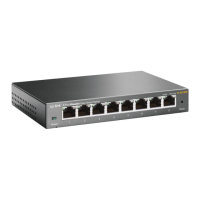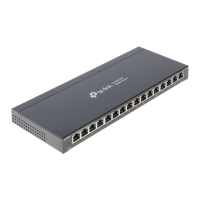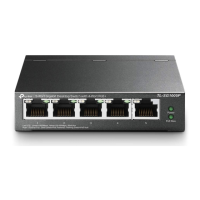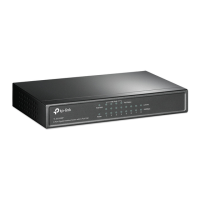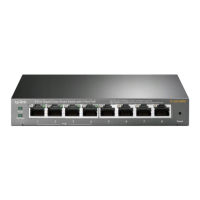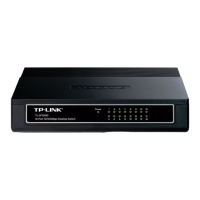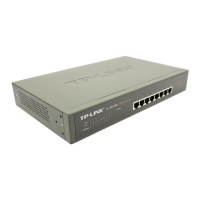Configuring QoS Configuration Example for Basic QoS
User Guide 69
5
Configuration Example for Basic QoS
5.1 Network Requirements
As shown below, both RD department and Marketing department can access the internet.
When congestion occurs, the traffic from two departments can both be forwarded and the
traffic from the Marketing department should take precedence.
Figure 5-1 Basic QoS Application Topology
RD Dept. Marketing Dept.
Router
Port 3
Port 1
Port 2
Switch A
Internet
5.2 Configuration Scheme
To implement this requirement, you can configure QoS in port based mode to put the
packets from the Marketing department into the queue with the higher priority than the
packets from the RD department. Follow these procedures to configure QoS in port based
mode.
1) Enable port based mode.
2) Map port 1 and port 2 to different priorities queues.
Demonstrated with TL-SG1016PE, the following section provides configuration steps.
